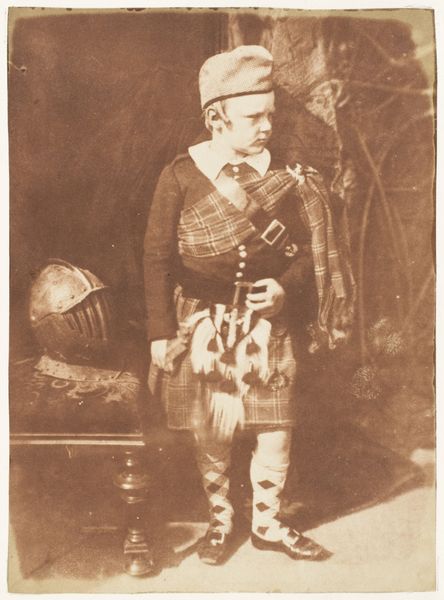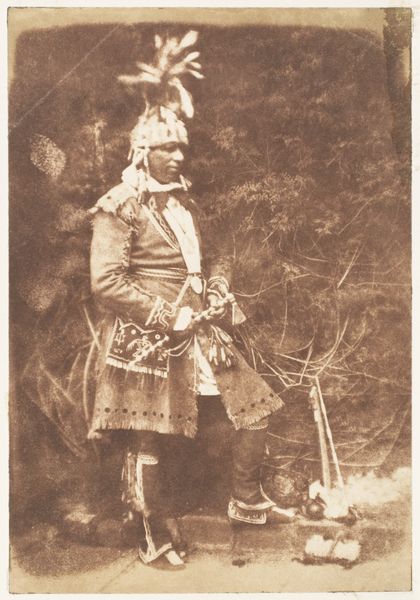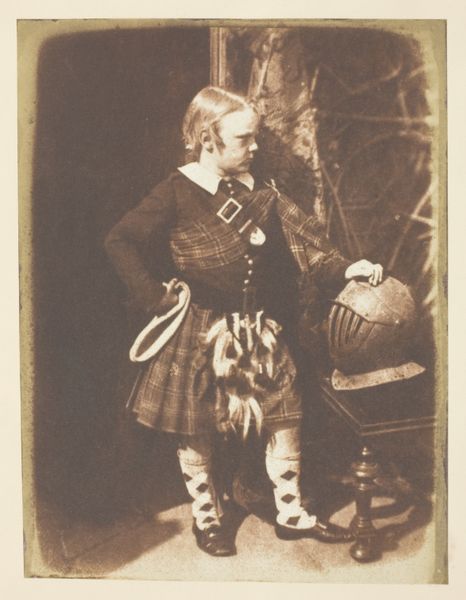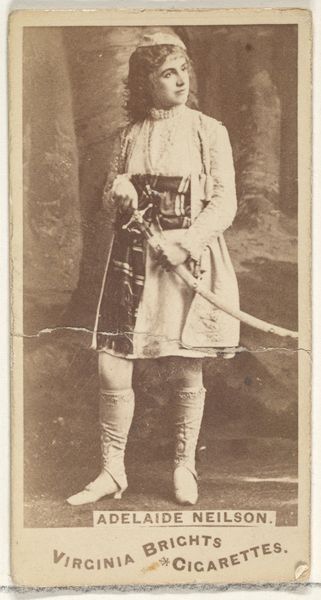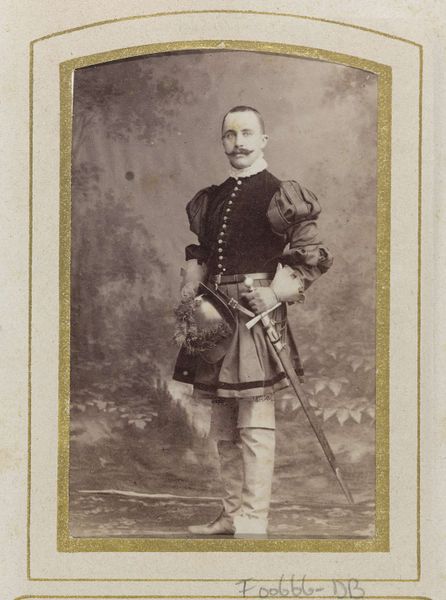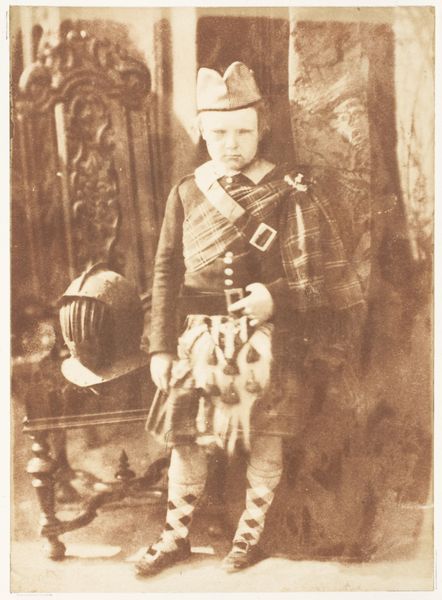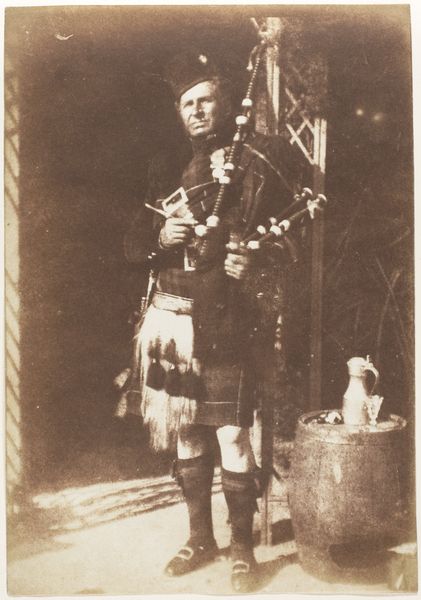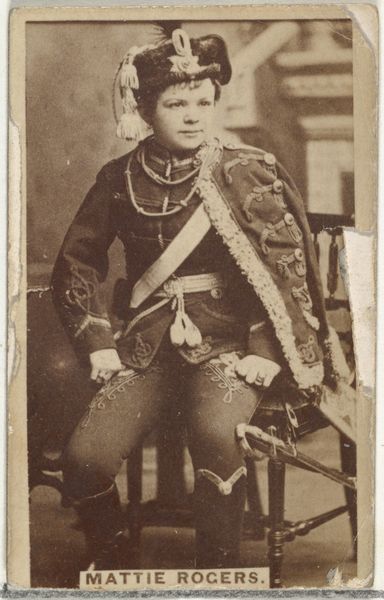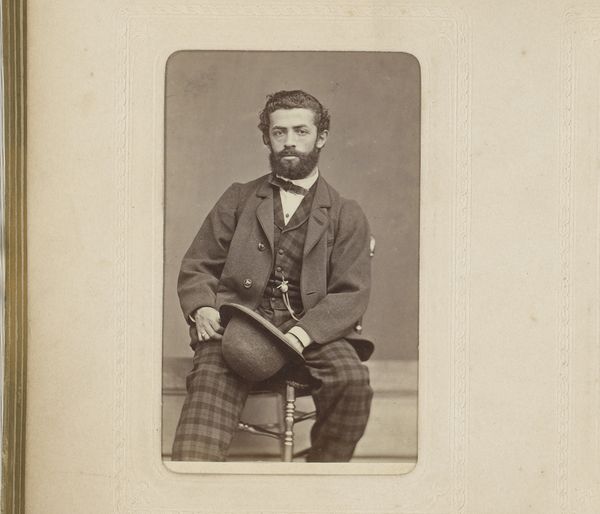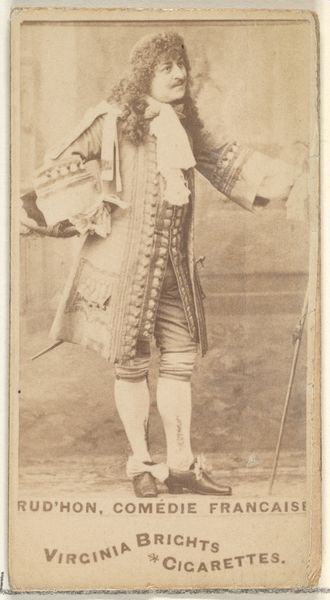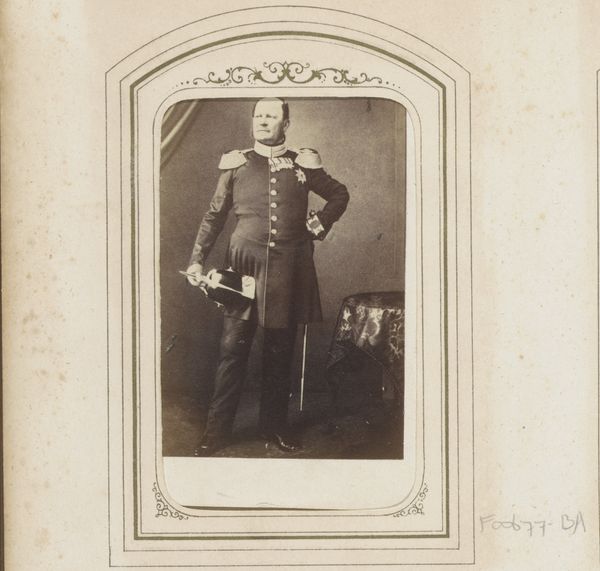![[Charles Edward Stuart, also known as Charles Manning Allan] by Hill and Adamson](/_next/image?url=https%3A%2F%2Fd2w8kbdekdi1gv.cloudfront.net%2FeyJidWNrZXQiOiAiYXJ0ZXJhLWltYWdlcy1idWNrZXQiLCAia2V5IjogImFydHdvcmtzLzhkNWM5NWI0LTdlMGItNGVlNC1hYjY4LTc2MjVkZTQwYzBjMC84ZDVjOTViNC03ZTBiLTRlZTQtYWI2OC03NjI1ZGU0MGMwYzBfZnVsbC5qcGciLCAiZWRpdHMiOiB7InJlc2l6ZSI6IHsid2lkdGgiOiAxOTIwLCAiaGVpZ2h0IjogMTkyMCwgImZpdCI6ICJpbnNpZGUifX19&w=3840&q=75)
[Charles Edward Stuart, also known as Charles Manning Allan] 1843 - 1847
0:00
0:00
daguerreotype, photography
#
portrait
#
daguerreotype
#
photography
#
historical photography
#
romanticism
Copyright: Public Domain
Curator: What a captivating image! This is a daguerreotype portrait of Charles Edward Stuart, also known as Charles Manning Allan, created sometime between 1843 and 1847 by Hill and Adamson. Editor: It’s immediately striking. The textures seem almost palpable—the crispness of the plaid, the glint of the metal ornamentation. I wonder what processes they used. Curator: Hill and Adamson were pioneers of photography in Scotland. They exploited this new technology as a tool for documenting society, aligning it with the prevailing Romantic aesthetics. Their portrait of Stuart performs an interesting dance between authentic likeness and constructed image. Editor: I'm particularly drawn to the meticulous rendering of the textiles. The pleats of the kilt, the intricate patterns… this tells me much about the economics of production in that era. Think about the labor involved in creating the cloth! Curator: Absolutely. And in this historical context, Stuart's attire speaks to the romanticization of Scottish heritage—the tartan and regalia function as potent symbols of cultural identity and perhaps a claim to ancestry, even staged ones. The image subtly taps into the political sentiments of the time. Editor: Agreed. It is also interesting to note how posed the subject is! Notice his gloved hand lightly placed over the table’s adornments. With the use of early photography technology the subjects need to remain still so that the photograph won’t come out blurry. Curator: This image invites us to contemplate how photography was, and still is, used to shape perceptions of identity and heritage. The photograph becomes a historical document—a blend of the authentic and the manufactured. Editor: And it prompts us to consider the artist's role, their use of craft, their hand in not only the picture taken but what story is also visually told. It’s not just an image. Curator: Indeed. It makes one pause to ponder about how the staging of a historical narrative, impacts the present and its construction. Editor: Definitely! It brings up fascinating material and conceptual questions to consider about craft and intention.
Comments
No comments
Be the first to comment and join the conversation on the ultimate creative platform.
